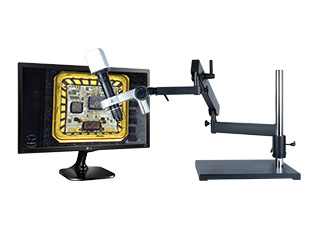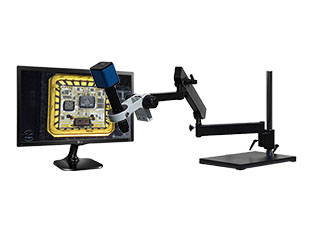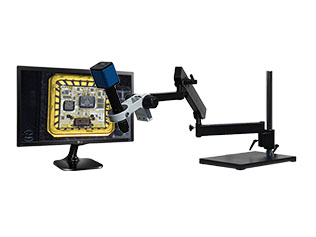When using a digital microscope, it is crucial to have good lighting to properly illuminate the part you are inspecting. Our digital microscopes come standard with an LED ring light with adjustable intensity and a diffuser glass to reduce glare. Since the ring light is mounted directly onto the digital microscope’s lens, it sits parallel to the camera to provide a shadowless and uniform illumination. The LED ring light is usually sufficient for most applications, especially those inspecting three-dimensional objects that have reflective qualities, such as medical devices or electronic components.
Proper lighting may become more difficult to accomplish when the component has a shiny surface; this is when polarized or coaxial lighting options will be helpful in minimizing glare on the surfaces.
Polarized Lighting: How Does it Work?
If your component is highly reflective, then the diffuser on the LED ring light may not be able to reduce the glare enough to produce quality imaging. These cases would benefit from polarized lighting instead. Polarized lighting has light waves that vibrate in one direction, achieved by a polarizing filter that blocks out waves in one direction to reduce glare and increase overall image contrast.
The most common example of polarizing lighting physics being applied is the polarizing sunglasses. Bright reflections on a horizontal surface are partially polarized with light waves that vibrate parallel to the ground. A pair of polarizing sunglasses with polarizing filters oriented vertically would allow light waves vibrating perpendicular to the ground to pass through while blocking out light waves vibrating horizontally parallel to the ground. This is very useful when you’re driving in the sun or are at the beach where the sunlight is reflecting off the surface of the road or water because the polarizer blocks out the light waves causing the reflective glare for better visibility.
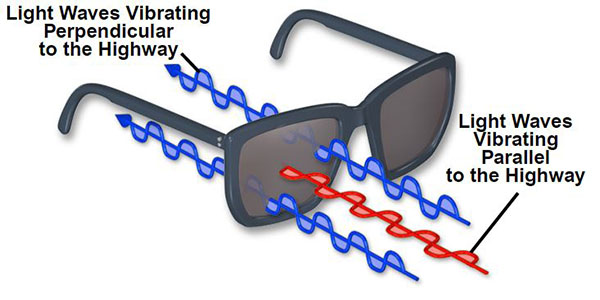
Polarization in Digital Microscopy
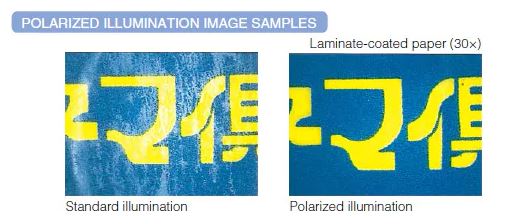
The same concept is applied in digital microscopy when inspecting reflective materials, such as metals, transparent materials, rough surfaces on crystal formation, minerals and fibers. Through polarizing light, reflective glares are reduced in order to inspect the composition, 3D structure of the specimen, and surface details that cannot be discerned with normal lighting.
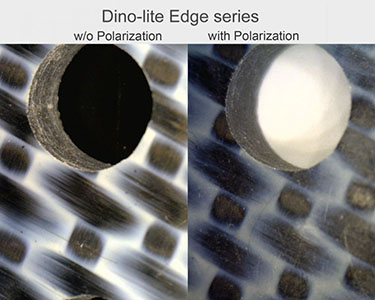
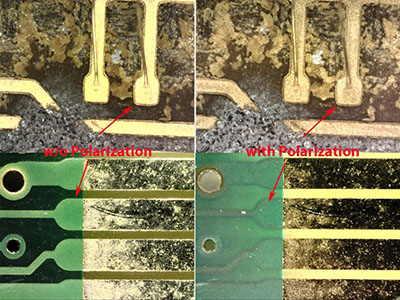
Polarizer lighting can be added onto our digital microscopes as an optional accessory in the form of a polarized ring light. For portable digital USB microscopes like Dino-Lite products, certain models will include a polarizer feature that can be switched on and off, or adjusted to the degree of polarization needed for your applications. Polarizer lighting on digital microscopes are most often used for surface analysis of metals and plastics, printing/graphic art production, and electronic component inspection.
Coaxial Lighting: For Highly Reflective or Dark Flat Surfaces
Alternatively, coaxial lighting can be used on highly polished or dark, smooth flat surfaces to reduce glare while still providing homogenous, shadowless lighting. Within the coaxial component of the microscope, the light source is directed towards a half mirror, which reflects half the light towards the surface you are inspecting while transmitting the rest to diffuse lighting and minimize glare.

Coaxial illumination on digital microscopes are ideal for inspections of integrated circuits, semiconductor wafers, metals, material analysis and other applications requiring even illumination on polished surfaces. They are also particularly useful in machine vision and quality control for inspecting surface blemishes.
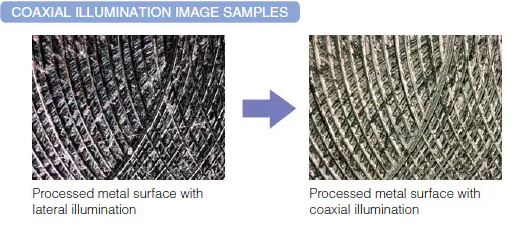
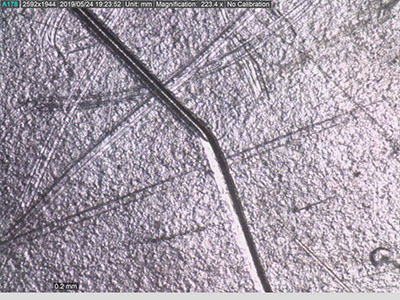
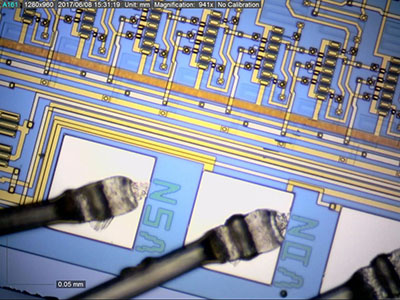
Unlike the standard LED ring light and optional polarizing ring light for our digital microscopes, which attaches to the lens of a digital microscope, coaxial lighting are structurally incorporated into the microscope’s optical body rather than installed externally between microscope and specimen.
Our digital microscopes featuring the L006 high magnification lens body all have the option to add the coaxial lighting port accessory into the microscope configuration. For more information, please refer to our HD 1080p manual focus model HD806, auto focus model HDAF206 and more in below links.
Specific coaxial lighting Dino-Lite portable digital microscope models are also available on our webstore. Contact us today for help with choosing the right digital microscope and lighting for your needs.



